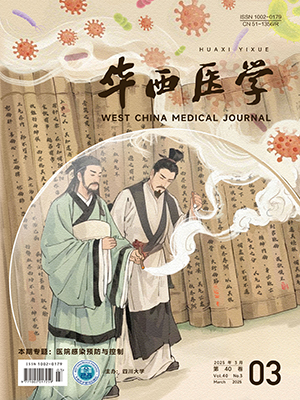| 1. |
Seifert SA, Armitage JO, Sanchez EE. Snake envenomation. N Engl J Med, 2022, 386(1): 68-78.
|
| 2. |
Warrell DA, Williams DJ. Clinical aspects of snakebite envenoming and its treatment in low-resource settings. Lancet, 2023, 401(10385): 1382-1398.
|
| 3. |
中国蛇伤救治专家共识专家组. 2018 年中国蛇伤救治专家共识. 蛇志, 2018, 30(4): 561-567.
|
| 4. |
Bhaumik S, Beri D, Lassi ZS, et al. Interventions for the management of snakebite envenoming: an overview of systematic reviews. PLoS Negl Trop Dis, 2020, 14(10): e0008727.
|
| 5. |
刘明华, 文亮, 孙溦, 等. 毒蛇咬伤并发骨筋膜室综合征临床防治分析. 中国急救医学, 2007(10): 898-900.
|
| 6. |
周辉辉. 毒蛇咬伤致骨筋膜室综合征的急救与护理. 蛇志, 2015, 27(4): 448-449.
|
| 7. |
Harper S, Buckley C, Sanscartier S, et al. EE260. An early cost-effectiveness analysis of a new continuous compartment pressure monitoring device in tibial fracture patients who are at risk of developing acute compartment syndrome (ACS). Value in Health, 2022, 25(12S): S104.
|
| 8. |
Beniwal RK, Bansal A. Osteofascial compartment pressure measurement in closed limb injuries – Whitesides’ technique revisited. J Clin Orthop Trauma, 2016, 7(4): 225-228.
|
| 9. |
程建文, 邓思煜, 苏伟. 改良垂直水柱测压在急性骨筋膜室综合征临床防治中的应用. 广西医科大学学报, 2020, 37(7): 1307-1312.
|
| 10. |
苏伟, 赵劲民, 张斌, 等. 垂直水柱测压法与 Whiteside 法诊断骨筋膜室综合征的实验研究. 中国矫形外科杂志, 2010, 18(22): 1896-1898.
|
| 11. |
Wu Y, Luo L, Niu T, et al. Evaluation of the new Chinese Disseminated Intravascular Coagulation Scoring System in critically ill patients: a multicenter prospective study. Sci Rep, 2017, 7(1): 9057.
|
| 12. |
Garner MR, Taylor SA, Gausden E, et al. Compartment syndrome: diagnosis, management, and unique concerns in the twenty-first century. HSS J, 2014, 10(2): 143-152.
|
| 13. |
von Keudell AG, Weaver MJ, Appleton PT, et al. Diagnosis and treatment of acute extremity compartment syndrome. Lancet, 2015, 386(10000): 1299-1310.
|
| 14. |
杜建航, 康展荣, 黄利彪, 等. 骨筋膜室综合征的病理生理机制及诊断研究进展. 创伤外科杂志, 2021, 23(3): 231-234.
|
| 15. |
Persson HE, Sjöberg GK, Haines JA, et al. Poisoning severity score. Grading of acute poisoning. J Toxicol Clin Toxicol, 1998, 36(3): 205-213.
|
| 16. |
Valdez C, Schroeder E, Amdur R, et al. Serum creatine kinase levels are associated with extremity compartment syndrome. J Trauma Acute Care Surg, 2013, 74(2): 441-445.
|
| 17. |
Zhang D, Janssen SJ, Tarabochia M, et al. Factors associated with poor outcomes in acute forearm compartment syndrome. Hand (N Y), 2021, 16(5): 679-685.
|
| 18. |
Bawaskar HS, Bawaskar PH. Snakebite envenoming. Lancet, 2019, 393(10167): 131.
|
| 19. |
Guo J, Yin Y, Jin L, et al. Acute compartment syndrome: cause, diagnosis, and new viewpoint. Medicine (Baltimore), 2019, 98(27): e16260.
|
| 20. |
Schmidt AH. Acute compartment syndrome. Injury, 2017, 48(Suppl 1): S22-S25.
|
| 21. |
蔡波, 吕可, 陈跃英, 等. 四川省两栖爬行动物分布名录. 中国科学数据(中英文网络版), 2018, 3(1): 11-19.
|
| 22. |
覃公平. 中国毒蛇学. 2 版. 南宁: 广西科技出版社, 1999: 45.
|
| 23. |
Bohlmeyer TJ, Wu AH, Perryman MB. Evaluation of laboratory tests as a guide to diagnosis and therapy of myositis. Rheum Dis Clin North Am, 1994, 20(4): 845-856.
|
| 24. |
Bessman SP, Carpenter CL. The creatine-creatine phosphate energy shuttle. Annu Rev Biochem, 1985, 54: 831-862.
|
| 25. |
杨国成, 赵海涛, 马梁策, 等. 毒蛇咬伤创面感染的影响因素及其预测模型. 中华医院感染学杂志, 2023, 33(17): 2688-2692.
|
| 26. |
游靖宇, 刘少云, 张茂. 急性骨筋膜室综合征的诊治研究进展. 创伤外科杂志, 2020, 22(6): 470-473.
|
| 27. |
Leversedge FJ, Moore TJ, Peterson BC, et al. Compartment syndrome of the upper extremity. J Hand Surg Am, 2011, 36(3): 544-559.
|
| 28. |
龙盛双, 王瑞烈, 周满红, 等. 从蛇咬伤并发骨筋膜室综合征谈蛇咬伤的急诊救治. 遵义医学院学报, 2007, 30(1): 52-53.
|




